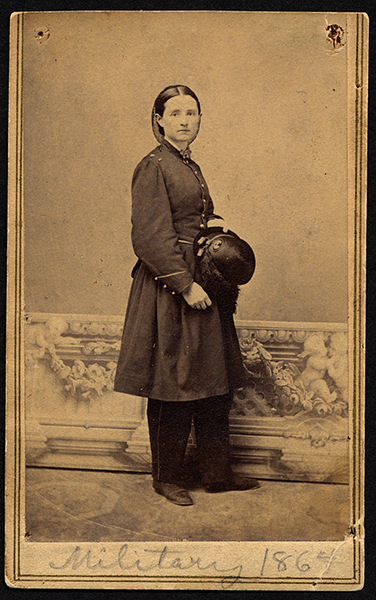Using stories to tell history
- by guest blogger, Chrissie Perella, iSchool grad student and intern extraordinaire
As work on our project, Playing with the Past, steps into high gear, we are busy researching and writing "stories" - the content which will interest our audience and make them want to read more. In our collections, we have many compelling stories of early women doctors; finding someone or several someones who make an interesting read isn't the problem. Just like curating live exhibits, we often struggle with several problems:
Do we have enough 'stuff' (aka primary sources) in our collection to tell the story we want to? What is the exact story we want to tell? We have more than enough 'stuff' - how do we narrow it down?
And finally, and perhaps the most important questions: Will our audience find it as interesting as we do? Will they be able to connect to it in some meaningful way? Will they 'get' the story we're attempting to tell using all this old stuff?

In Civil War dress, 1864
The most recent story I've been working on is about Dr. Mary Edwards Walker, who was the only woman to serve in the American Civil War as a surgeon and the only woman to receive a Congressional Medal of Honor. Later in life, she became a staunch supporter of woman's dress reform. I found a woman described as "...the first American woman to wear publically bloomers, yet her patent leather boots and plumed hat gave her a very dainty appearance. She was not pretty, but she was far from being ugly." Her radical way of dressing (she eventually ditched the dress altogether and went for a Prince Albert jacket, trousers, and a silk top hat) and her outspoken manner seemed to have proved too much for other women reformists. However, she was also known to offer help to anyone in need, and one woman wrote that meeting Walker was her inspiration to become a nurse.
She's an interesting woman, for sure, with an interesting story. So what's the problem? For one thing, we don't have a collection of her stuff; we have the Lida Poynter papers, which consist of research work done by Lida Poynter in the late 1920s and 1930s for a biography of Mary Walker. As far as we know, it was never published. Don't get me wrong - Poynter's collection has a ton of good stuff, including letters to her from people who remember Mary Walker, newsclippings, and fantastic photographs. What we're short on, of course, are letters written to Walker; sadly, we have no more than three or four of these. By using these letters, we are creating another layer between our audience and Walker's story - something that is often unavoidable when dealing with archival material, but never preferential.

Working notes for Dr. Mary
The other problem? What part of her life do we want to showcase - the woman Civil War doctor or the dress reform supporter? Obviously, you can't ignore either, but focusing on one makes the story that much more compelling. Making this decision will make choosing what documents to use - and there's certainly no shortage from which to choose! And I have to keep in mind our audience; for this digital history toolkit, it's high school students. So I don't want to find extremely lengthy letters that go on about the weather - or if I do, they have to be able to cut, leaving only the 'juicy bits'.
As far as archival work goes, this is some of the most challenging and most fun. it's a lot like building an exhibit, but with the knowledge that these documents will be used to help students get excited about history and learn why primary documents are cool. I've got a tall order to fill.